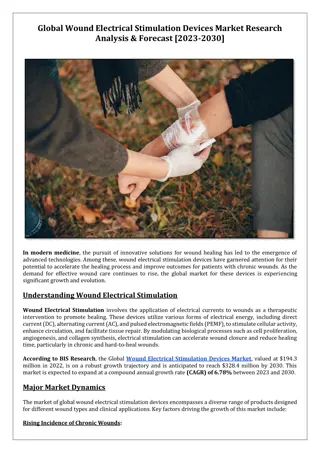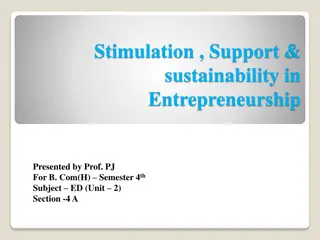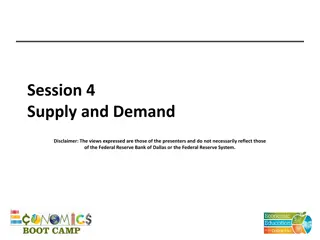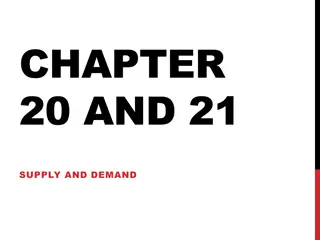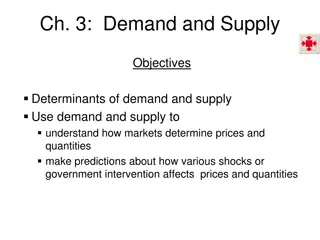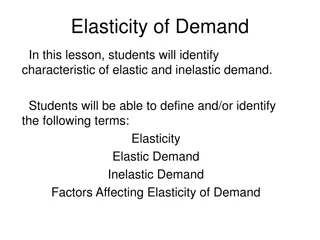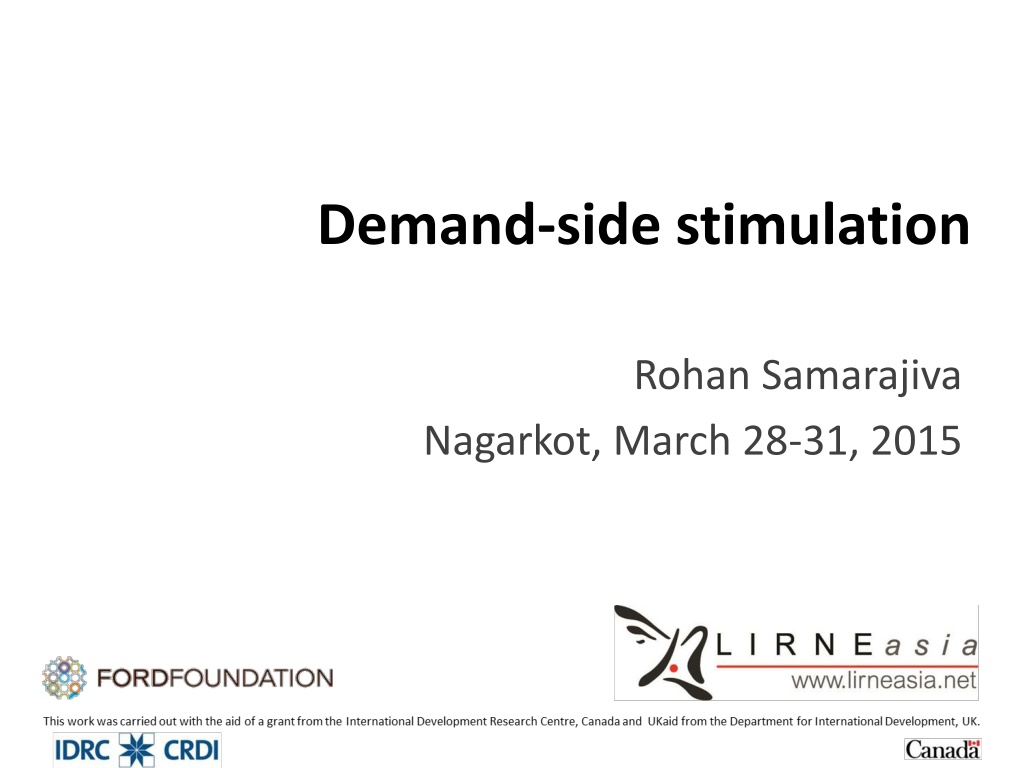
Demand-side Stimulation for Locally Relevant Internet Content
Explore the importance of locally relevant content for internet usage and the challenges faced by content providers in hosting content locally. Learn from case studies in Rwanda and policy dimensions aiming for a knowledge-based economy by 2020.
Download Presentation

Please find below an Image/Link to download the presentation.
The content on the website is provided AS IS for your information and personal use only. It may not be sold, licensed, or shared on other websites without obtaining consent from the author. Download presentation by click this link. If you encounter any issues during the download, it is possible that the publisher has removed the file from their server.
E N D
Presentation Transcript
Demand-side stimulation Rohan Samarajiva Nagarkot, March 28-31, 2015
Locally relevant content leads to increased use of the Internet But, it needs to be accessible quickly and cheaply In recent times More attention has been given to create locally relevant content (Part 2) Less attention to the supporting infrastructure
Content providers lack incentive to host locally Cheaper to host overseas (US / EU) The Internet makes virtual a reality (content does not HAVE to be hosted in close proximity to its users) However, Access becomes costly (E.g. Int l bandwidth costs passed on to users) Latency is higher impacts Adoption / use
Similar to the case of Europe pre- liberalisation Historically content was hosted in the US Before telecom markets were liberalised, hosting services within the EU was expensive Traffic was routed via the US As traffic and locally relevant content increased; IXPs emerged (reduced latency & cost), becoming large hubs content was hosted closer to the hubs Similar impacts have been observed in Kenya with the introduction of KIXP and access to Google Global Cache
Case study Rwanda Landlocked Dominated by mountains in the west and savanna to the east Area 26,338 sq km Population 10.7 million (2011 est) Median age 18.5 yrs Pop density 407 (highest in Africa) GDP per capita 698 USD Gini (high) 50.8 HDI (low) .0506 (151st)
Legal/ Policy Dimension Vision: Knowledge based economy by 2020 National ICT Plan (NICI - 2015) was introduced in 2011 and is specifically aimed at increasing access to and uptake of Internet services across the country Universal Access Fund (UAF), specifically aimed at facilitating access to telecoms services in rural areas Additional tax on telecoms operators Subsidize Internet services Subsidies of mobile handsets Government separately contributes to a One Laptop per Child project.
Economic Dimension In Rwanda there is a large negative externality associated with overseas hosting of local content LOCAL HOSTING OVERSEAS HOSTING Hosting Costs (Size of website: 8 GB) USD 261 (annual) USD 149.99 (annual) Cost of importing traffic (9 Mbps) - USD 13,500 (annual) Average Latency 10 ms 350 ms - Passed on to ISPs and finally to end-users, for an annual saving of USD 111
The websites that generate less traffic are much worse off Approximately 8 content aggregators operating in Rwanda For over 800 small websites (all hosted overseas) About 80% of the traffic flows back in to Rwanda ~ 1 Mbps Hosted in-country is too expensive at present; However, traffic is limited (partly) because of high latency. Cost-effective local hosting is needed.
Invention: Googles Global Cache & Akamai s local cache cluster in Rwanda GGC, containing largely YouTube videos was made available to all ISPs connected to RINEX in July/August 2013
Analysis Page Load Time as Round Trip Time Decreases (Ilya Grigorik, 2012) During congested evening hours, researchers measured peak latencies up to 800-1000ms in Rwanda Number of game players and average latency (Source: GamersNights, 2014) Liquid Telecom offered to host their server As the latency decreased, the number of players increased
How do you get content & apps that are attractive to Nepalis Web content in local languages/of local relevance Most people will access the Internet through wirelessly connected devices Apps become relevant How to encourage more, better content services and apps
Revenue sources In-app advertisements Pay per download of content or app In-app purchases Upgrading free apps to more feature-rich ones for a fee (freemium), and Subscriptions
Payment facility Premium SMS Ideal because it reaches all mobile subscribers regardless of phone type However, challenging because MNO revenue shares can be very high Nevertheless, rates are negotiable and MNOs are beginning to realize that high revenue shares are slowing market growth Increasing smartphone penetration and mobile money adoption are rapidly creating alternative payment facilities, outside MNO control Airtime transfers Mobile money Bank-based payments such as electronic transfers and checks, or debit and credit cards
Distribution channels Availability of an app is dependent on its distribution network Through app stores Mobile operators e.g., through unstructured supplementary service data (USSD) services Through local distribution networks
Incubators & hubs E.g., what Ooredoo is doing in Myanmar Big bar camps to identify potential innovators/entrepreneurs Selected entrepreneurs are provided work locations where they can interact with each other Provided mentoring so they can develop products & most importantly viable business plans Provided guidance by experienced entrepreneurs Possibly matchmaking with angel investors?
Which ones work? Or all? Any that have been missed?
References http://www.infodev.org/infodev- files/mobile_apps_at_the_base_of_the_pyra mid_summary_report.pdf http://lirneasia.net/wp- content/uploads/2015/03/Promoting-Local- Content-Hosting-to-Develop-the-Internet- Ecosystem.pdf



